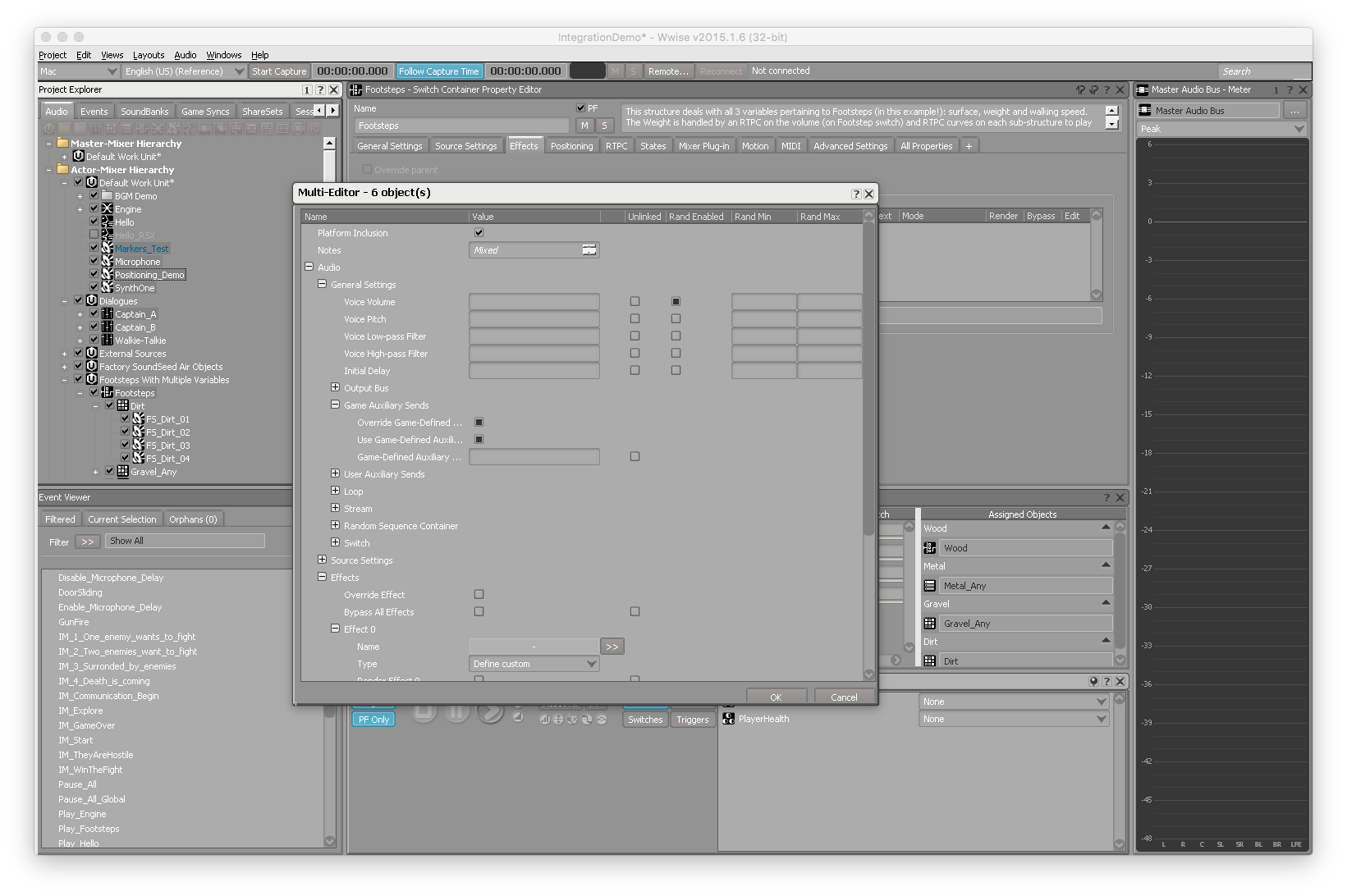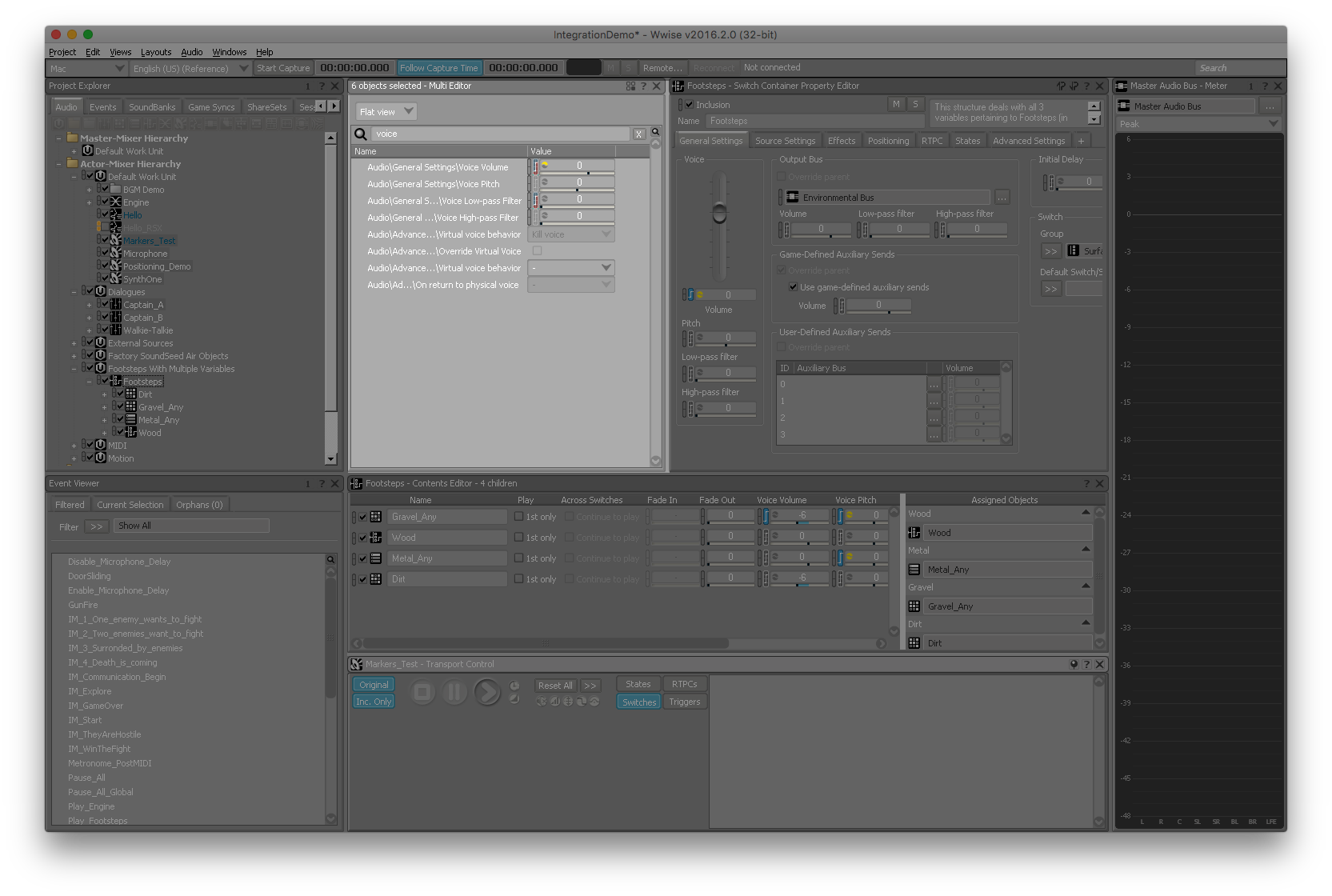As the most advanced audio engine for interactive audio, every release represents our unwavered commitment to our clients and industry.
By delivering a combination of anticipated features alongside an enhanced set of essentials, we are able to ensure that we consistently answer to the needs of the community as interactive audio projects evolve. We love challenging ourselves at Audiokinetic and we intend to continue playing a central role in shaping the future of interactive audio at large.
Before we dive into a list of feature highlights for 2016.2.0, for those of you who have been around recently, you will have noticed the sophisticated Wwise Ambisonics pipeline. With the release of Wwise 2016.2.0, we ensure that we are pushing our collective creative limits even further by delivering an enhanced API plug-in which truly empowers everyone creating spatial audio plug-ins for Wwise.
Whether you are working in game audio, on a VR project within or outside of gaming, or on any project that involves interactive audio, the Wwise sound engine has always been an industry favorite, and today, Wwise 2016.2.0 has taken this up another notch!
New features and workflow improvements:
New Multi Editor view
The new Multi Editor view can now be docked in the UI and used in real time. It reacts to the selection of single or multiple objects, which allows for quick setting modifications.
The user interface has also been streamlined to show Randomizer, Link/Unlink, and RTPC icons in mixed states.

Before

Wwise 2016.2.0
Play Source in Authoring
Play Source is a playback option that bypasses all hierarchy settings like volume, RTPC, States, and Effects. This is quite practical when you need to compare the audio source imported into Wwise with the one affected by all the hierarchy's properties. Use Shift+Space Bar or Shift+Mouse Click to listen to the source, but be careful as sometime the variance in volume can be significant!
Note that source settings such as Loop Markers, Trims, and Fades are still honored when Play Source is in use.

Voice limiting enhancements
Voice limiting has been refactored for more predictability and flexibility. The new system allows for any number of limit groups to be created, and then it processes limitations sequentially from Actor-Mixer hierarchies up to the Master bus.
A new virtual voice option, "Kill if finite, else virtual," has also been added to accommodate for the majority of looping vs. one-shot sounds’ virtual settings.
Blend Container – performance optimization
The new Blend Container “continuous” option allows to play and stop child objects based on their clip regions in a Blend Track. This new behavior greatly optimizes memory usage and, in multiple scenarios, CPU usage. Here’s an overview of the two behaviors:
- Step: The Blend Container starts playback of all children upon Play. The Blend Container playback is considered to have ended once all child voices have stopped playing (or when a Stop action is received).
- Continuous: The Blend Container actively manages the play and stop of children based on a crossfade region which plays the child when the RTPC value is inside the clip region, and stops it when it is outside the clip region. The container has to be stopped with a Stop Action as it would remain alive and monitor RTPC changes even when no voices are playing. (Note that this is very similar to the Switch Container in Continuous Mode).
Persistent container history
It's now possible to save and reload history for all currently loaded containers and initiated game objects (for example, the current position in Sequence Containers and previously played elements in Random Containers).
Profiler performance optimization and new API Profiler
Significant optimizations were made to the Profiler layout's UI refresh rate during the development of the new API Profiler, which now runs faster than before.
The new API Profiler functionality displays all API calls and parameters sent by the game, which can yield interesting performance optimization opportunities for developers. Due to the high amount of data traffic it requires, this feature is disabled by default and needs to be activated from the Profiler Settings view before being used.

Solo & Mute of game objects
It is now possible to solo/mute the sounds playing from game objects directly from the Advanced Profiler or Game Object Explorer views. Simply locate the game objects of interest and use the solo or mute buttons to focus on or ignore the audio playing from certain game objects.

Before

Wwise 2016.2.0
Runtime editing enhancements on remote connection
Runtime editing of Attenuations (set and edit Attenuation objects, switch 2D/3D, add RTPC, modify 2D panner settings, etc.), bus routing, and advanced settings (all Playback Limit and Priority properties) are now all applicable while connected to the game.
Platform inclusion now uses a link/unlink mechanism
Objects' platform inclusion (the check boxes you find beside each object in the Project Explorer Actor-Mixer and Interactive Music hierarchies) now have the same behavior as all other properties: They use the link/unlink mechanism, which helps in identifying which structures are included for each platform.

Before

Wwise 2016.2.0
List View - Media & Structure Size info
New information about object, structure, and media size has been added to the List, Query, and Reference Views. This information can be refreshed by right-clicking on the cell and using the refresh option. This will display in bytes how much space has been used up by each object in the SoundBank.
Note that this figure will not match the memory used at runtime by the same objects because the sound engine optimizes memory used based on a number of factors.
Tab delimited import improvements
The creation of audio files, Actor-Mixer structures, and Dialogue Events has been improved to allow automatic importation of more complex structures and property settings such as:
- Missing parents (automatically created)
- Switch and State Groups
- Dialogue Event paths, probability, and weight.
Note that it's now possible to use WwiseCLI to import tab-delimited files.
Plug-ins:
McDSP - Native Futzbox and ML1 user interfaces
Green arrives in town! The McDSP Effects now have the same controls and look and feel as their original DAW versions. We increased the number of channels from 7.1 to an unlimited number of channels, which makes it a great candidate for ambisonics and other multichannel formats beyond the traditional 7.1. Same great quality, more fun to use.
Wwise Convolution Reverb now supports ambisonics IR
In our effort to provide the best tools for 3D audio, the Convolution Reverb now supports multi-channel and ambisonic impulse responses.
Support for Microsoft HRTF
Wwise now supports the Microsoft HRTF binaural plug-in, which is optimized for HoloLens developers.
Wwise Launcher:
Manage Unity & Unreal integrations directly from the Wwise Launcher
It is now easier than ever to install or update Wwise Unity and Unreal integrations. Simply navigate to their new respective tabs in the Wwise Launcher, and manage all your integration needs.
We’re animated, are you? Comment below to let us know what you think of Wwise 2016.2.0!


Commentaires
Robert Rice
November 22, 2016 at 02:39 pm
Awesome!
Enrico Momo
December 28, 2016 at 08:09 pm
This is incredible; I found Wwise really interesting. And I ll be looking forward to future updates!!!